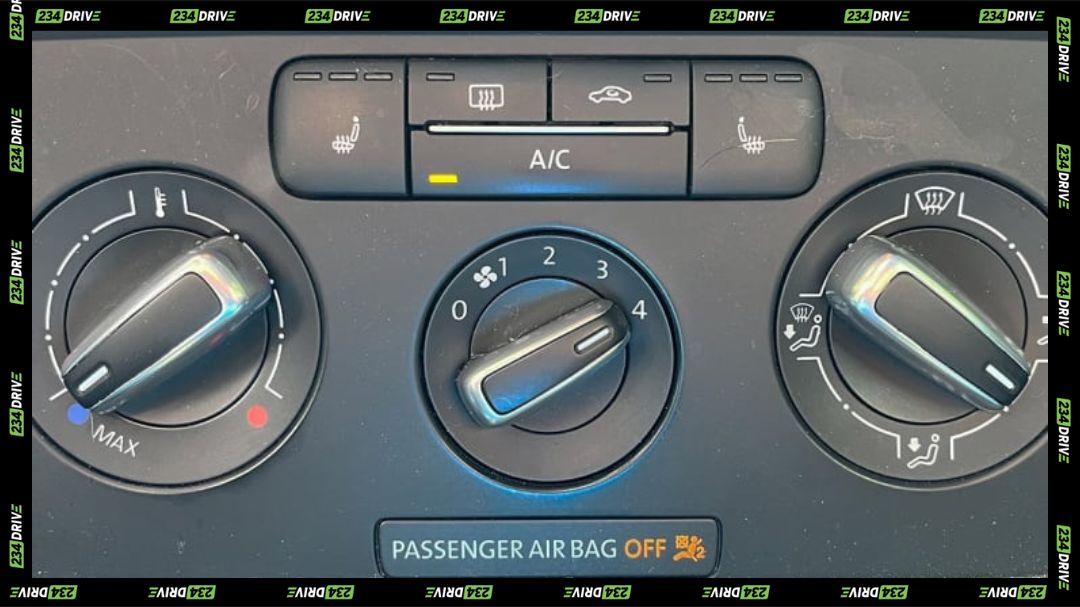Last Updated on October 16, 2025 by Aaron Blake
Have you ever wondered how your car keeps you cool on a scorching day or warm during chilly mornings? Understanding how climate control works in vehicles can make your driving experience much more comfortable.
Whether you’re stuck in traffic or cruising down the highway, your vehicle’s climate system is quietly working to maintain the perfect temperature just for you. Keep reading, and you’ll discover the simple science behind this amazing technology—and why it matters for your comfort and safety every time you get behind the wheel.

Credit: 234drive.com
Contents
Key Components Of Vehicle Climate Control
Climate control in vehicles keeps the cabin comfortable in all weather. It uses several parts to cool, heat, and move air inside the car.
Understanding these parts helps explain how your vehicle stays warm in winter and cool in summer.
Air Conditioning System
The air conditioning system cools and dehumidifies the air inside the vehicle. It uses refrigerant to absorb heat from the cabin and release it outside.
- Compressor: Pressurizes the refrigerant gas
- Condenser: Cools the refrigerant turning it into liquid
- Expansion Valve: Controls refrigerant flow into the evaporator
- Evaporator: Absorbs heat from inside the cabin
- Blower Fan: Pushes cool air into the vehicle
Heating Elements
Heating elements warm the air inside the vehicle. Most cars use heat from the engine coolant to raise the temperature of the air.
| Component | Function |
| Heater Core | Transfers heat from engine coolant to air |
| Blower Motor | Moves warm air into the cabin |
| Temperature Control Valve | Regulates coolant flow to heater core |
Ventilation And Airflow
Ventilation moves fresh air into the vehicle and removes stale air. It also directs air to different parts of the cabin.
- Air Intake: Brings outside air into the system
- Recirculation Door: Switches between fresh and recirculated air
- Air Vents: Deliver air to the windshield, face, and feet
- Blower Fans: Control the speed of airflow
Sensors And Controls
Sensors and controls keep the climate system working automatically and efficiently. They monitor temperature and adjust settings.
- Temperature Sensors: Measure cabin and outside temperatures
- Humidity Sensors: Detect moisture levels inside the vehicle
- Control Panel: Lets the driver set desired temperature and fan speed
- Climate Control Module: Manages the system based on sensor data

Credit: www.youtube.com
How Temperature Regulation Happens
Vehicles use climate control systems to keep the cabin comfortable. These systems adjust the air temperature inside the car. They work by cooling or heating the air as needed.
The system senses the cabin temperature and makes changes automatically. This helps maintain a steady temperature for passengers.
Cooling Process Explained
The cooling process uses a refrigerant to remove heat from the air. The air conditioner compresses the refrigerant gas, turning it into a liquid. This liquid absorbs heat from inside the car and releases it outside.
- The compressor pressurizes the refrigerant gas.
- The condenser cools the gas into a liquid.
- The evaporator absorbs heat from the cabin air.
- The refrigerant returns to gas form, repeating the cycle.
Heating Mechanism
The heating system uses heat from the engine’s coolant. Warm coolant flows through a heater core. Air passes over this core and warms up before entering the cabin.
| Component | Function |
| Engine Coolant | Provides heat |
| Heater Core | Transfers heat to air |
| Blower Fan | Pushes warm air into cabin |
Maintaining Desired Temperature
The climate control system uses sensors to monitor temperature inside the car. It adjusts cooling and heating to keep the set temperature steady. Fans change speed to control airflow.
Temperature control steps:
- Sensors detect cabin temperature.
- System compares it to the desired temperature.
- Cooling or heating activates as needed.
- Fans adjust airflow speed.
- System repeats process to stay balanced.
Advanced Features Enhancing Comfort
Modern vehicles use climate control systems to keep the cabin comfortable. These systems adjust temperature and airflow automatically.
Advanced features improve comfort by customizing the environment for all passengers. These systems are smart and easy to use.
Automatic Climate Control
Automatic climate control keeps the cabin at a set temperature. Sensors monitor the inside and outside air to adjust heating and cooling.
This system uses a control unit to balance airflow, temperature, and humidity. It works without the need for manual changes during the drive.
Dual And Multi-zone Systems
Dual and multi-zone systems let passengers set different temperatures. Each zone can have its own climate settings for better comfort.
- Driver and front passenger can choose separate temperatures
- Rear passengers may have their own controls
- Some systems allow individual air flow adjustments
- Zones help reduce discomfort on long trips
Air Quality Management
Air quality management systems improve the cabin air by filtering pollutants and allergens. They also control humidity levels inside the vehicle.
| Feature | Benefit |
| Air Filters | Remove dust and pollen |
| Ionizers | Reduce odors and bacteria |
| Humidity Control | Prevent dry or damp air |
| Fresh Air Intake | Bring in clean outside air |
Troubleshooting Common Issues
Climate control in vehicles keeps the cabin comfortable. It adjusts temperature and airflow automatically. Problems can make your drive less pleasant.
Knowing signs of trouble and simple fixes can help you avoid big repairs. This guide covers common issues and when to get expert help.
Signs Of Climate Control Malfunction
Watch for signs that your vehicle’s climate control is not working right. Early detection helps prevent further damage.
- Unusual noises from vents or blower motor
- Inconsistent or no air flow
- Temperature does not change as set
- Foul or moldy smells from vents
- Foggy windows despite defrost settings
Simple Fixes And Maintenance Tips
Many climate control problems can be fixed with basic care. Regular maintenance keeps the system running smoothly.
- Check and replace cabin air filters regularly.
- Keep vents clean and free of debris.
- Use the climate control system often to maintain seals and lubricate parts.
- Check refrigerant levels and refill if needed.
- Clean evaporator drain tubes to prevent water buildup.
When To See A Professional
Some issues require a technician’s tools and skills. Know when to seek professional service to avoid costly damage.
| Problem | Reason to See a Professional |
| No cold or hot air | Possible refrigerant leak or compressor failure |
| Strange noises | Damaged blower motor or fan |
| Persistent odors | Mold inside the system needing deep cleaning |
| System not responding | Faulty control module or wiring issues |

Credit: www.bmwblog.com
Frequently Asked Questions
How Does A Vehicle’s Climate Control System Work?
It uses sensors to adjust heating, cooling, and airflow automatically for comfort inside the car.
What Components Are Key In Vehicle Climate Control?
Main parts include the thermostat, blower fan, air conditioning compressor, and temperature sensors.
Can Climate Control Improve Fuel Efficiency In Cars?
Yes, modern systems optimize engine load and reduce energy waste, helping save fuel.
How Does Automatic Climate Control Differ From Manual Systems?
Automatic systems adjust settings by themselves, while manual controls need driver input to change temperature.
Why Is Climate Control Important For Driver Safety?
It keeps windows clear and maintains comfortable temperature, helping drivers stay focused and alert.
Conclusion
Climate control in vehicles keeps the cabin comfortable all year. It cools the air in summer and warms it in winter. The system uses fans, sensors, and refrigerants to work well. Drivers can easily adjust settings to fit their needs.
Understanding how it works helps you maintain it better. Clean filters and regular checks keep the system running smooth. Enjoy every drive with a comfortable temperature inside your car. Simple technology, big comfort.





